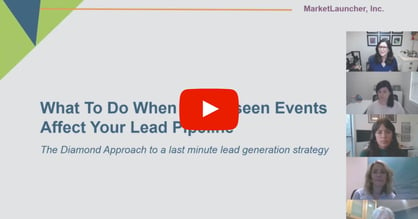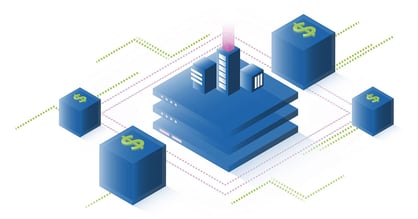Whether you win or lose a deal, there are many factors on both sides of the table that go into that final decision. On your end, it could be your initial conversation, proposal process, pricing strategy, and overall engagement model. On the other side, your buyers are faced with different motivations, research methods, and selection criteria – not to mention other competitors vying for their time.
It’s not often that you can get direct feedback from your buyers about how you stack up in the market and what you could be doing better.
A Win/Loss Analysis is a series of interviews with buyers who you have either closed/won or lost for a variety of reasons. Speaking transparently with those who have directly experienced your sales process from top to bottom helps you uncover your sales potential and understand the customer journey – because asking the difficult questions can lead to priceless feedback for growth.
With the right Win/Loss Analysis in place, you can:
The first step to a great interview is to make sure it’s conducted by a third party, not the initial sales rep who established the relationship. In fact, it’s best that the interviewer does not work directly with your company at all so they can be completely impartial. That's why our Win/Loss Analysis program is led by seasoned specialists who ask the hard-hitting questions and deliver results in an easily digestible format. If you can’t use a third-party, a member of your marketing team or someone who was not part of the sales process at all could be suitable.
Whoever the interviewer may be, make sure it is a phone call or in-person meeting. While online surveys could be helpful to gauge current customer satisfaction, for a Win/Loss Analysis, you want to catch nonverbal cues, ask follow-up questions, and show your genuine interest in their opinion and feedback.
Schedule your interviews no more than 60 days after you closed or lost the deal so it’s fresh in the prospect’s mind. Out of respect for their time, keep the interview to 30 minutes or less. Remember, you still want them to think favorably of your company, especially for lost prospects who can still become a FAN of your brand. You can even prepare them beforehand by sending them a few sample questions and an explanation of what will be discussed.
One of the most challenging parts of a win/loss analysis is getting an even number of interviews on both sides – which is essential so as not to skew the data. Usually, the wins are more likely to participate, so reach out to a few more decision makers in the loss category with the expectation that some will fall through. You can even offer a small incentive like a gift card as a thank-you for their time.
Here are a few questions you can ask during your Win/Loss Analysis interview, keeping in mind that you can adjust these based on industry, job title, and what you already know about the relationship. But don’t change them too much, as you’ll want to compare responses across participants and recognize patterns.
On top of having your questions prepared beforehand, we recommend writing an initial call script for both wins and losses to open the conversation and guide it in a purposeful direction.
For the Wins:
For the Losses:
[Ask the applicable questions from above in addition to the following]
Now it’s time to compile all of your interview responses into a format that allows you to spot trends and patterns. You can create graphs and charts that are broken down by decision maker, competitors mentioned, criteria that led to a decision, market perception, sales rep ratings, pricing, and more.
The information you gather can benefit your entire company in addition to sales – the marketing team tasked with improving brand perception, your innovation team who is planning new developments, and management as they assess where to pivot in the market and improve service deliverability.
At MarketLauncher, our proven Win/Loss Analysis methodology gives you the insights you need about your current and future customers. Our interviews are conducted by seasoned specialists. You have access to a dashboard giving you real-time insights as interviews are completed. In addition, we deliver a comprehensive report every 90 days with trends and actionable intelligence that you can leverage across your business.
If you’re interested in seeing a sample report of our Win/Loss Analyses and learn more about how it can benefit your organization, please reach out at the link below or send an email to dklein@marketlauncher.com.




